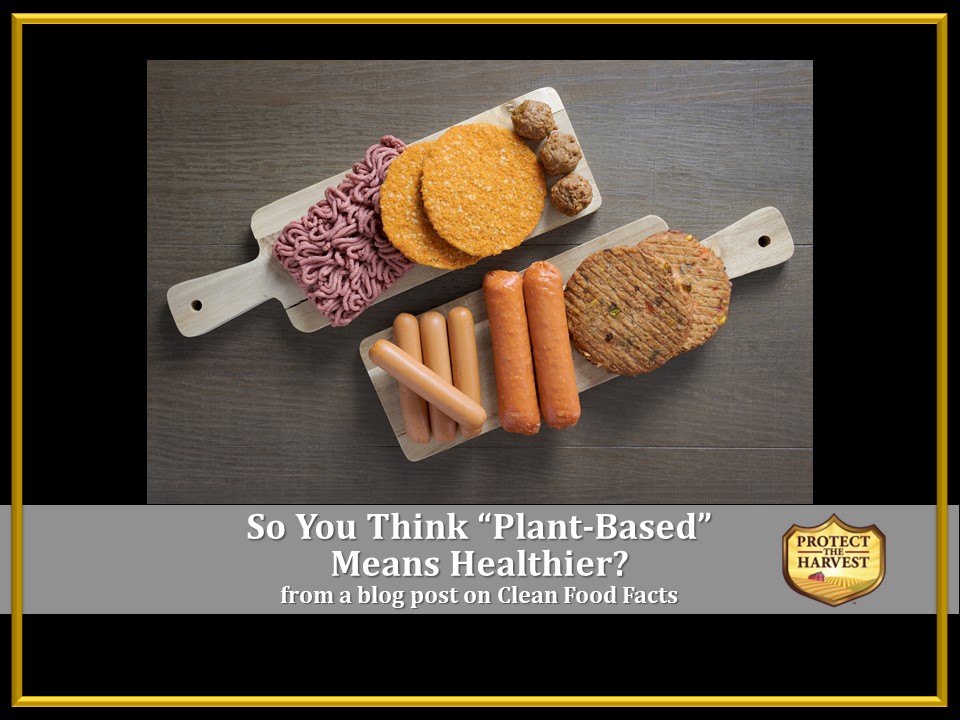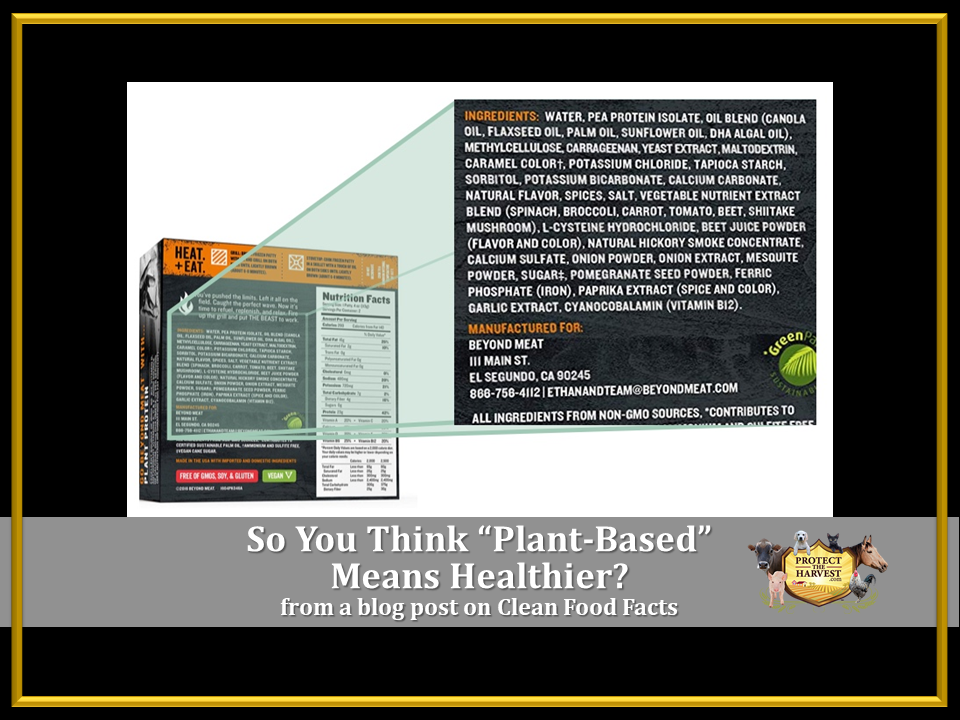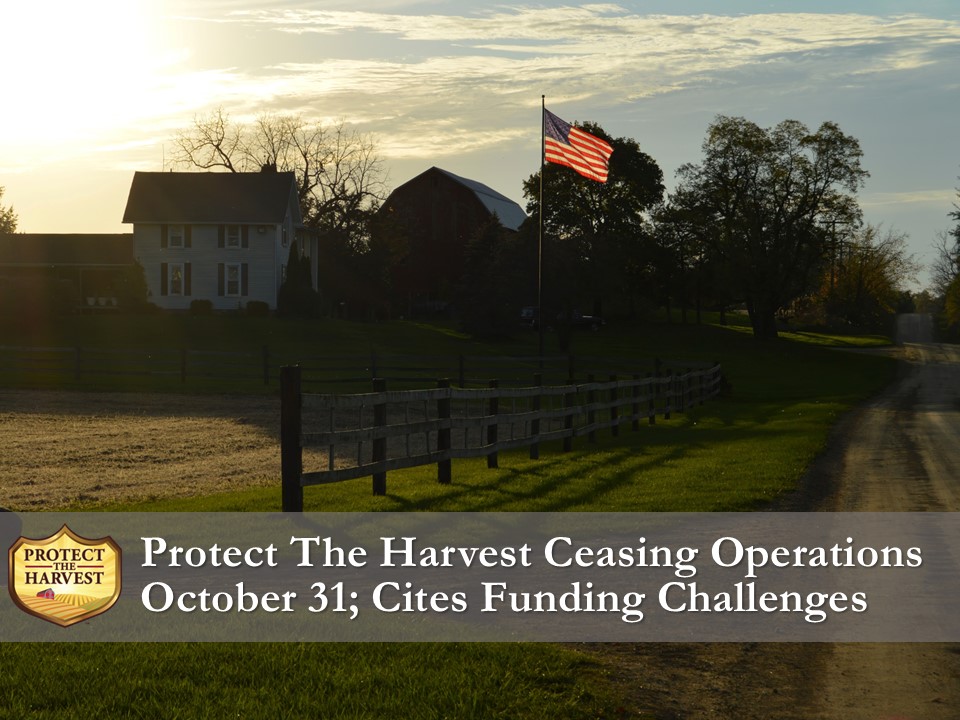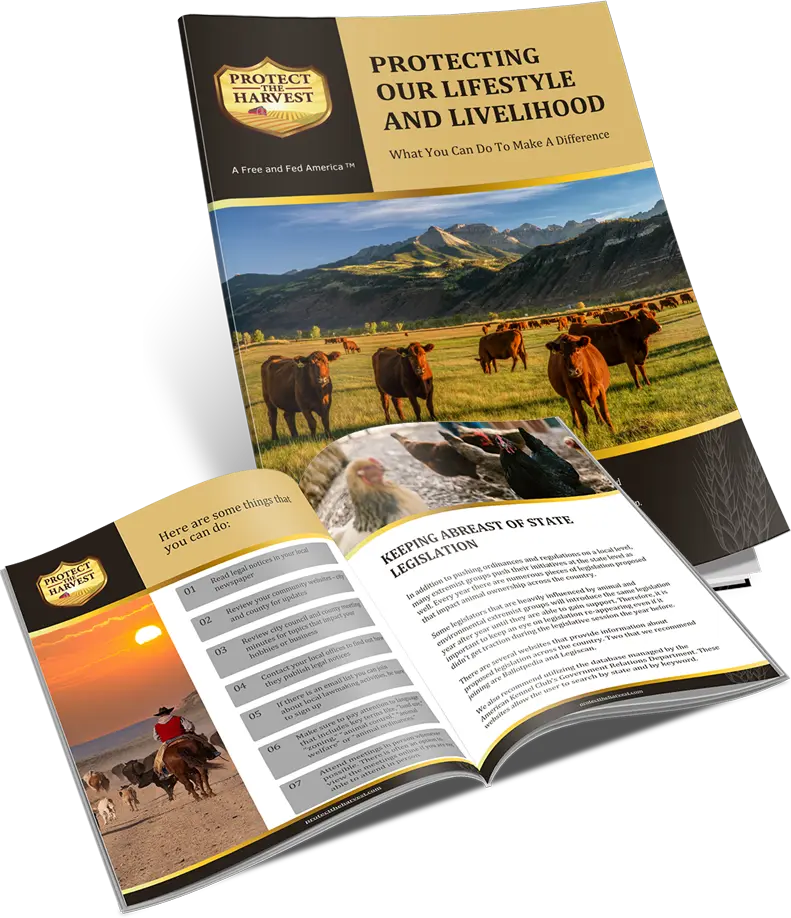From a Clean Food Facts blog post
Do you consider “pea protein isolate” or “expeller pressed canola oil” to be vegetables?
Chances are you’ve heard of plant-based meat. The products have taken grocery stores and fast-food chains by storm. But despite being called “plant-based”, these foods really aren’t the best choice for your body.
Just look at the ingredients in The Beyond Burger, one of the most popular plant-based meats:
Beyond Meat is one of the companies marketing themselves as healthy and sustainable while the actual ingredients in their products are heavily processed and way higher in fat, saturated fat, sodium, and calories than lean ground beef. And as far as plants go, you can hardly consider pea protein isolate or expeller pressed canola oil to be vegetables.
So if “plant-based” meats aren’t really made with vegetables, what are they made of?
Here are some of the worst ingredients we found in “plant-based” meat products:
1. RED #3 (ERYTHROSINE)
Red #3/erythrosine is an artificial food dye that the FDA has recognized as a thyroid carcinogen since 1990. It is prohibited from use in cosmetics and topical medications, but the agency’s repeated attempts to ban Red #3 from food use were stopped by special interest groups.
2. CARAMEL COLORING
Caramel coloring refers to any of the four classes of caramel food coloring, two of which are associated with cancer. The manufacturing process of Class III and Class IV caramel color produces carcinogenic byproducts that can remain in the final product.
3. TERTIARY BUTYLHYDROQUINONE (TBHQ)
Tertiary butylhydroquinone (TBHQ) is a synthetic preservative that prevents discoloration in processed foods. Studies of TBHQ in laboratory animals have found associations with increased risk of convulsions, liver enlargement, neurotoxic effects, and tumors (source 1, source 2). Consequently, the FDA limits the amount of TBHQ allowed in foods to less than 0.02 percent of fat content.
4. SODIUM TRIPOLYPHOSPHATE (STPP)
Sodium tripolyphosphate (STPP) is a synthetic preservative that helps processed food retain tenderness and moisture during storage and transportation. According to the National Institute for Occupational Safety and Health (NIOSH), STPP is a suspected neurotoxin and can cause digestive distress in high enough quantities.
5. SOY PROTEIN ISOLATES, CONCENTRATES, AND TEXTURED VEGETABLE PROTEIN
Soy protein isolates, concentrates, and textured vegetable protein are made by separating soy proteins from fats. To do this, many manufacturers bathe soybean flakes in a solvent called hexane, which is a known human neurotoxin and suspected of damaging reproductive and fetal health. Most hexane is evaporated off, but small amounts of hexane remain in the final product. Although the European Union prohibits foods from containing more than 10 parts per million (ppm) of hexane residues, the FDA doesn’t limit hexane in processed soy, nor does it require manufacturers to monitor levels in their final product. Independent testing has found 50 ppm hexane in U.S. food products – more than 5 times Europe’s safety threshold!
6. PROPYLENE GLYCOL
Propylene Glycol is a colorless, odorless chemical derived from petroleum. It’s the primary ingredient in antifreeze and the liquid in e-cigarettes. The FDA recognizes propylene glycol as safe in small doses (although the way the FDA determines what is safe is questionable to begin with), but the European Union has a stricter threshold. Their limit lead to the recall of Fireball Cinnamon Whisky in three Scandinavian countries for containing too much propylene glycol to meet safety standards.
As far as healthy eating goes, this ain’t it.
At the end of the day, just take some time to look at what goes into the food that advertises itself as healthy. If it doesn’t look like a fruit, vegetable, legume, whole meat or any other whole food, it probably gets that way through extensive processing.
You’re far better off making your own plant-based foods from scratch (or literally even just eating high-quality meat) than eating this processed garbage.




